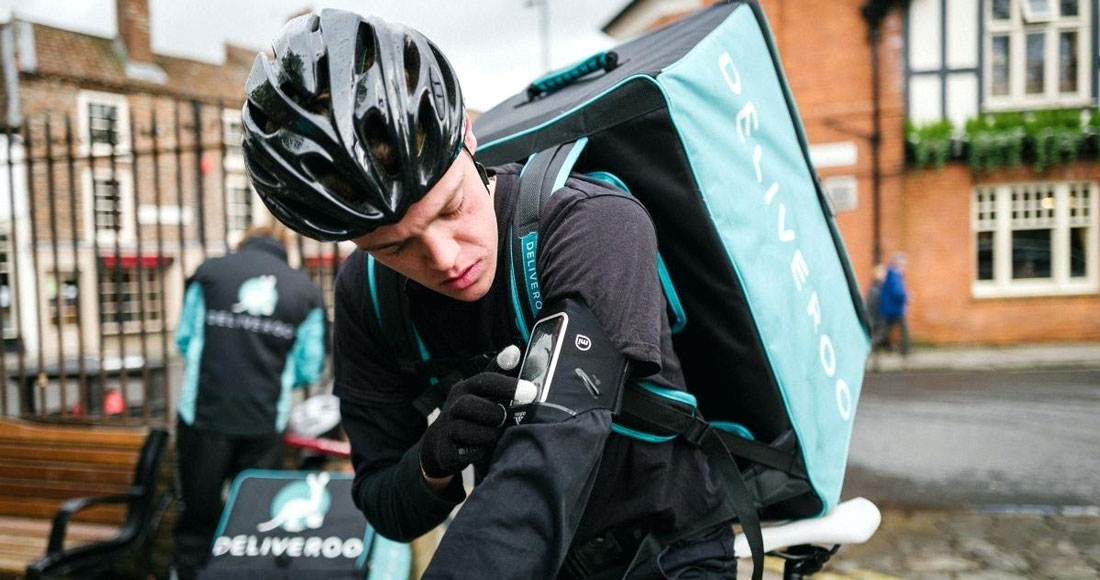Whether you have a thirsty side hustle to get off the ground, a gleaming car you’ve got your eye on or you’re prone to the odd online shopping binge, sometimes we all need a bit of extra cash. Only 10 years ago this would have required us to get a part time job (or re-assess our spending habits). But now, with the gig economy in full swing, you have ~options~.
Chief among them are Uber Eats and Deliveroo; as long as you have a smartphone and a bike (or car), you’re well on your way to being a courier. But before you start you’re going to want to know which will get you most buck for bang. Which pays a higher hourly rate? Which pays more per delivery? Which has me covered if I have an accident (if any)?
These are important questions to ask, because depending on where you live (i.e. how many orders you will typically be receiving) the answer will differ. And if you’re going to spend your nights delivering mouth-watering food (while later chowing down on cold beans and rice) you want to make the maximum number of dollars possible.
According to the ABC, Deliveroo riders receive $16 per hour, and $2.50 extra per delivery in established Deliveroo zones (i.e. big cities or urban hubs). But in trial areas, Deliveroo riders are typically paid $0 per hour, with $10 per delivery. Deliveroo claims that those riders, on average, earn $20 per hour.
This means that working for Deliveroo, if you don’t receive at least an order an hour (or, in trial zones, two orders per hour), you’ll be earning less than the delivery courier award rate, which is $18.31 for every hour of work. You’re also coming home with no superannuation, annual leave, penalty rates or insurance: the price of flexibility.
Uber Eats don’t pay a set wage either, and calculate your delivery fee using a drop-off fee, pick-up fee, and a fee per kilometre for the distance travelled to drop-off from pick-up. And of course—they then take a cut (35% if you’re on a bike, 30% if you’re driving a motor bike or car).
Uber Eats breaks it down as follows:
Pick-up fee: $5.50 per pick-up
Drop-off fee: $3.50 per drop-off
Delivery distance: $2.20 per km
This means that, after factoring in vehicle expenses, UberEATS drivers make roughly $8 to $12 per hour (if you’re riding a bike you don’t have to factor in vehicle expenses, but probably aren’t making as many deliveries, so you’d be looking at something similar).
This means that Deliveroo, with its $16 per hour base rate (and $2.50 per delivery rate) is the superior option if you are working non peak hours (i.e. not during lunch or dinner time) or you live in an area where you can’t be sure of a high number of deliveries.
Uber Eats, on the other hand, offers you the chance to make more commission, with its $6 delivery rate ($5.50 per pick up and $3.50 per drop off makes $9, which Uber takes 30% from, leaving you with $6) and its $2.20 per kilometre pay scheme.
To keep it simple: Deliveroo pays $2.50 per delivery on top of a $16 per hour base rate, while Uber pays $6 per delivery, on top of $2.20 per kilometre you drive while making it.
We’d recommend trying them both at the times of day you are planning on working in, calculating how many deliveries you get on average, and taking it from there. And to squeeze even more juice out of this delivery gig, here are some mistakes to avoid.
Working Outside Of Peak Demand
This one should be a no brainer, but we’ll say it anyway: work when you can complete the most number of deliveries possible. Especially with Uber Eats, who pay $6 per delivery, you could make $24 in an hour, just by completing four deliveries.
Not Completing Multiple Orders At Once
How do you complete four deliveries in one hour, you might be wondering. By picking up multiple orders from the same restaurant. Although this only counts as one pick up, you will most likely be delivering them to different addresses, where they count as distinct ($3.50) drop offs, and more opportunities to get a tip (which goes straight to you).
Dawdling
If you dawdle you’re not so much sticking it to the man as shooting yourself in the foot. In other words: don’t rush and put yourself (and the customer’s pizza) in danger, but don’t mess about either. Not only will this lead to less deliveries (i.e. less commission) but reduces your chances of getting a tip, and can negatively affect your rating.
Not Becoming An Uber Ride Sharer As Well
Uber Eats delivery pay is lower than Uber ridesharing pay, which, according to Ridesharer, is closer to $11 – $16 per hour after accounting for expenses. And you can do both at the same time: there is a button in the Uber App that allows you to indicate you are open to one or the other (or both). This is a particularly good option when demand is quiet, or inconsistent.
Not Being Aware Of ‘Boost’ Zones
During certain times of day, Uber creates geographical ‘Boost’ zones that multiply your earnings when delivering in that area (i.e. an incentive to drive in areas with high order demand). To make sure you’re working in one of these zones, check the app home screen, which will show you where it is the earnings multiplier for that day (it depends), and when the multiplier is available.
Not Taking Advantage Of Surge Pricing
Surge pricing is another earnings multiplier triggered during times of high demand. This one gets applied automatically though, so don’t worry about it too much.
RELATED: 5 Ways To Be A 5 Star Uber Rider
